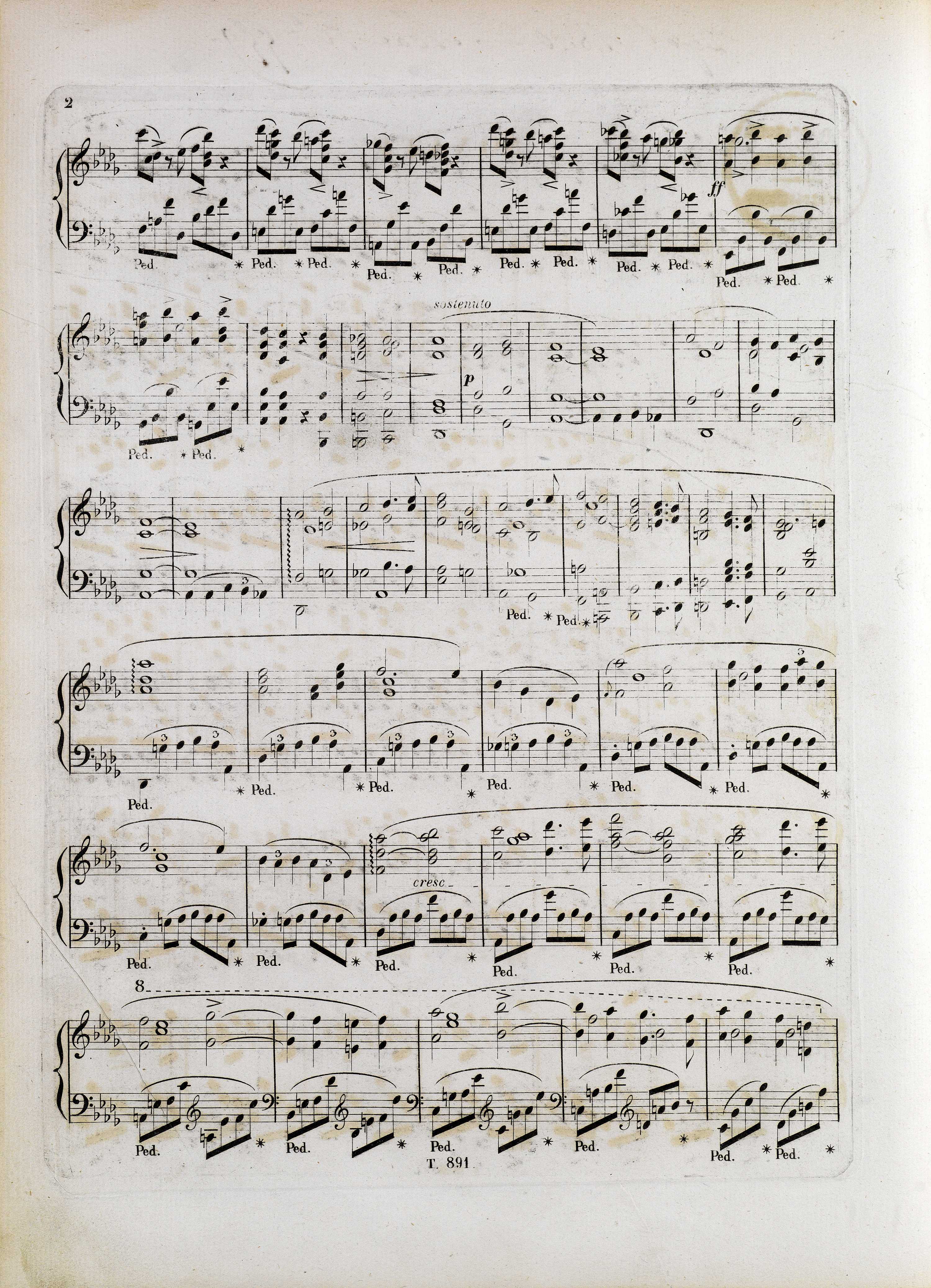



The premature ending of the dashes is certainly an error of GE1. According to us, also in the case of FE (→EE) the engraver's inaccuracy seems to be the most likely the reason of the absence of the dashes – they were led only to the end of the line of the text (cf., e.g., the Etude in C minor, Op. 25 No. 12, bars 33-39).
Compare the passage in the sources »
category imprint: Differences between sources
issues: Inaccuracies in GE, Inaccuracies in FE, GE revisions
notation: Verbal indications



